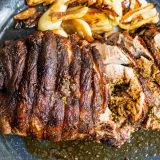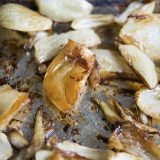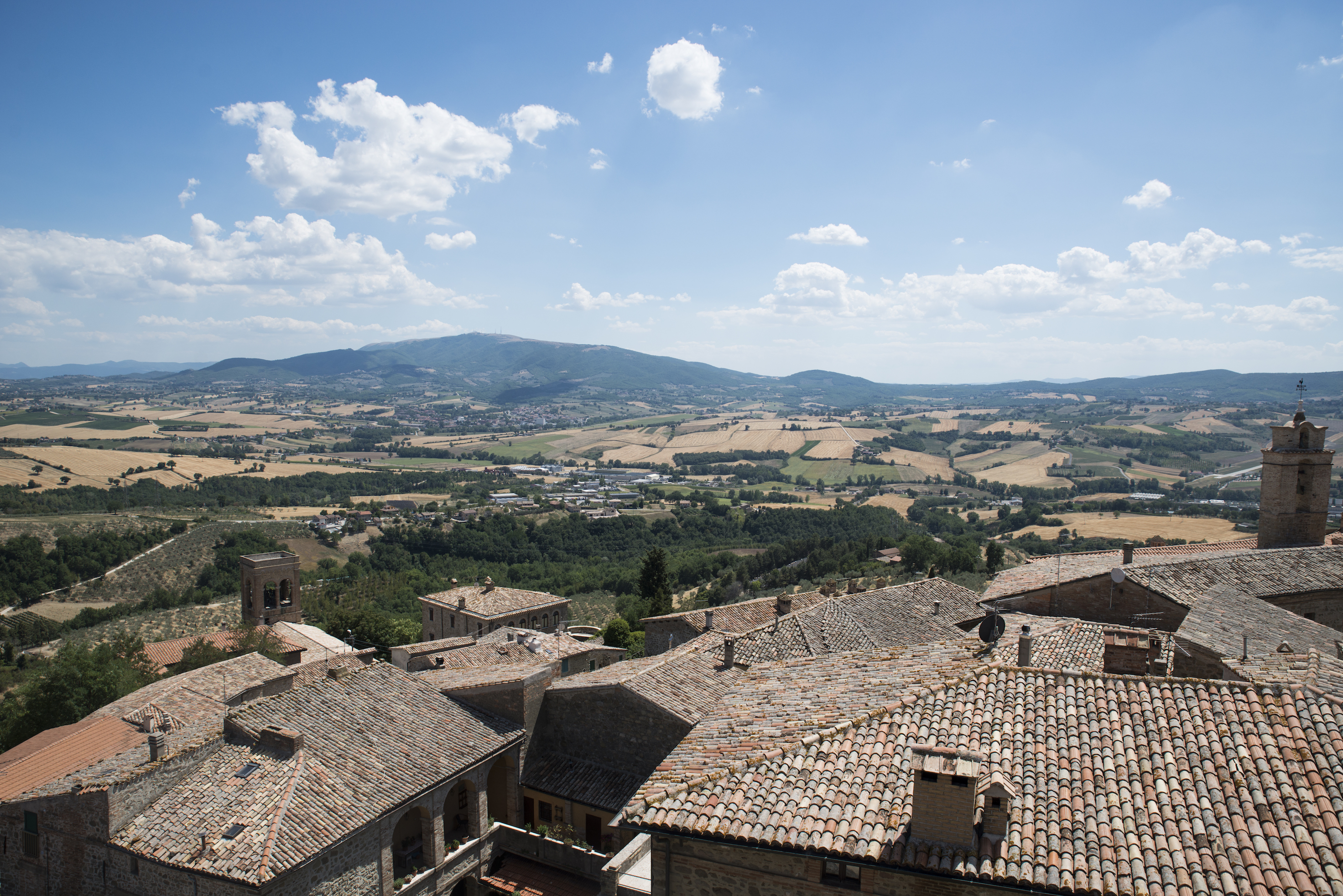
Standing in Grutti, it's not the imposing 13th century fortress or the adjacent St. Agnes church that you notice first. Nor the yellow-green patchwork of fields that unfold in the valley behind them, rolling and rising toward a mountainous backdrop.
It is the wind you notice. Because in this map-speck Umbrian village of 500 people, it carries a heady blend of crisp-skinned pork dancing with something herbal and rich, maybe allium. A smell at once of winter and summer.
I’d come to Umbria for porchetta, a roasted whole-pig tradition with pre-Roman roots. This is food without subtlety—a massive pig boned, slathered and stuffed with herbs by the handful, fresh fennel and chopped meats, then roasted on a spit until the skin crackles and the fat drips alluringly.
More than even barbecue in the American South, porchetta defines this region. Handwritten signs advertise it on butcher shop windows in every town and at roadside stands along the serpentine roads between.
Most of those signs point to Grutti. In these parts, it is synonymous with porchetta.
At least four families here make their living entirely from porchetta—sold by the sandwich or kilo—at weekly markets in ancient town squares across central Italy. Some began a century ago with a cart and a donkey. The original food trucks.
They have an eager audience. “Every kind of celebration a family is having” somehow involves porchetta, says Elisa Benvenuta, deputy mayor of the municipality that includes Grutti. “There's not a wedding or a christening or a birthday without it.”
She leads me a short walk from the castle to the workshop owned by her cousins, fourth-generation porchetta masters who butchered their first hogs at age 11. Inside, Luca Benedetti is busy slicing the rib bones out of an upturned 200-pound pig splayed on a stainless steel table. By the time he’s finished, the rib meat stands out as a row of neatly parallel ridges.
The boning process is a brutal business, a blend of precise cuts and unsettling pops and scrapes that gives life to that old political saw about not wanting to see the sausage made. Luca says boning matters mostly for presentation and convenience; that morning they served hundreds of people in Perugia, competing with eight other porchetta stands.
He rubs a heavy layer of salt and pepper onto the meat, enough to tickle every nose in the room, and cups his hand to funnel it into deep cuts in the thickest parts. He then reaches for a forest-green blend of wild rosemary and fennel foraged from the valley. Later, his uncle Mauro will pull out bunches of the herbs so I could smell them separately and then together, a lesson on aromatics that brings me back to childhood holiday dinners.
A thick coating of the herbs, mixed with chopped garlic, goes into the cavity next, then a stuffing of seasoned liver and other offal. Luca immediately wraps the beast around a metal rod and sews it all together with a curved, 8-inch needle that his grandfather fashioned from the prong of a beach umbrella in the 1970s. “They were once made out of good steel, so they are the best things to use,” he says. “These are the secrets.”
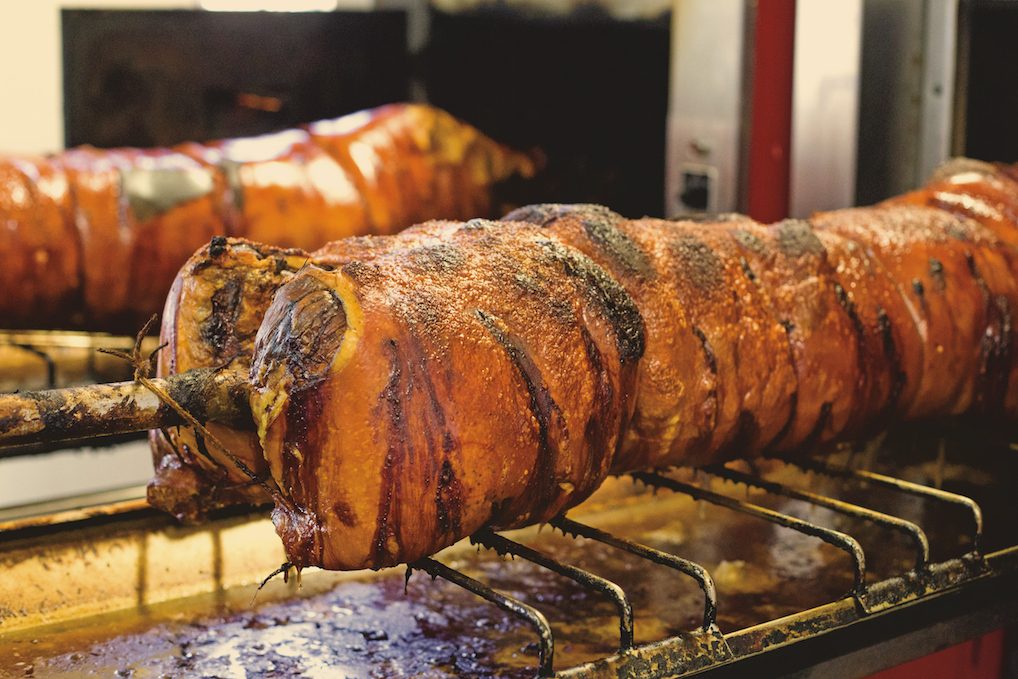
The pig, head still on, slides into a blazing industrial oven for two hours to crisp the skin, then the heat is lowered for another eight hours. The pig bastes in its own juices.
Too long to wait for a taste. Instead, Mauro turns to a half-consumed porchetta and takes great care to assemble sandwiches with slices of each part of it. The key is to get a bit of everything—crunchy skin, juicy rib, fatty belly and green, mineraly stuffing—all in one bite.
We eat silently, chewing and nodding in approval as I marvel at how a day-old roast on a dry roll could be this satisfyingly moist. Maybe that’s why it’s been made more or less that same way since the Etruscans dominated this area 2,500 years ago, according to academics who have pored over medieval texts.
Despite the historic pedigree, porchetta is hardly stuck in the past. It’s actually surging in popularity because of both a shift toward the Slow Food movement and a changing society. Busy working parents often grab a kilo of porchetta on their lunch break from which to build an easy family dinner. “Now the Italians have become like the Americans,” Mauro says. “Everyone is always running and hectic and stressed.”
A few miles away in San Terenziano, where a new yearly festival called the Porchettiamo is gaining steam, Maurizio Biondini is leading the street food evolution of what was once derided as a bricklayers’ sandwich. He and a friend built his Focaracceria Umbra food cart from the hipster combo of an antique motorcycle and a pop-up carnival stand.
Maurizio also learned butchering at 11, and inside the climate-controlled warehouse where he ages ham legs into prosciutto and cheeks into guanciale, he displays all the traditional techniques of slicing and stuffing and roasting a porchetta. Except he serves his on unsalted, buttery focaccia—an iconoclastic move in itself—with pecorino cheese and creamy lard flavored with truffles, spicy peppers or thyme. The warm sandwich all melts together into an unctuous decadence of herbs and fat, but he stays modest.
“I’m not the best,” he says. “I’m different.”
He invites me to dinner with his in-laws back in Grutti, where his father has a butcher shop. We sit next to the overlook under an arbor of grape leaves as the valley begins turning the same roasted orange as the setting sun. The table fills with fried zucchini blossoms and sage leaves, melon wrapped with Maurizio’s prosciutto, then handmade tagliatelle with wild asparagus and eventually a sword’s length of charred pork ribs, loin and liver wrapped in bay leaves. It’s all washed down with wine from bottles whose labels have long worn off.
Nearly everything on the table comes from the valley below, as it has for thousands of years.
Making a clean cut OF your fennel-rosemary panchetta
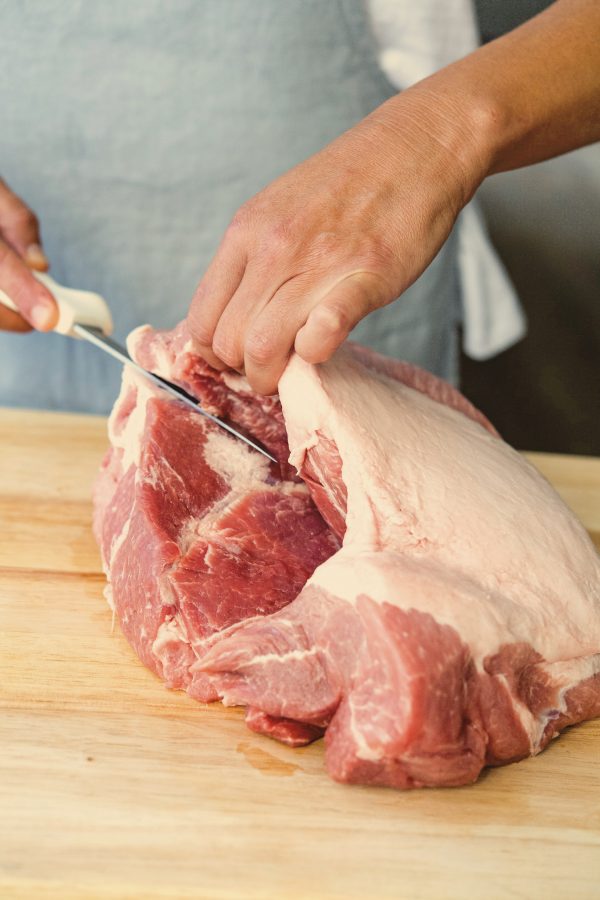
1. Once you remove any netting from the boneless pork butt, located the incision made by the butcher to remove the bone from the meat. Begin to cut the pork butt here.
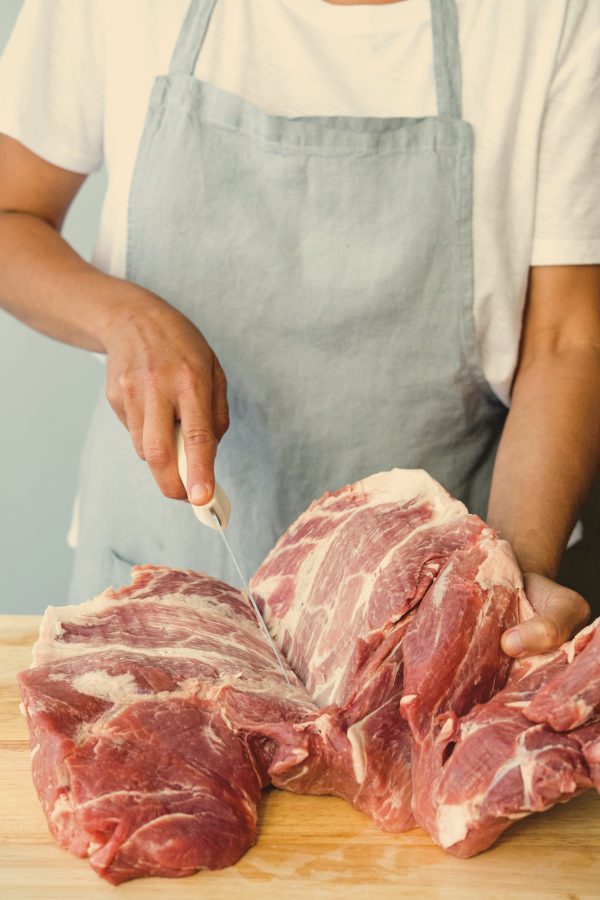
2. With a sharp knife, follow along that cut to continue opening the roast like a book; do not cut all the way through, as the meat must remain in one piece.
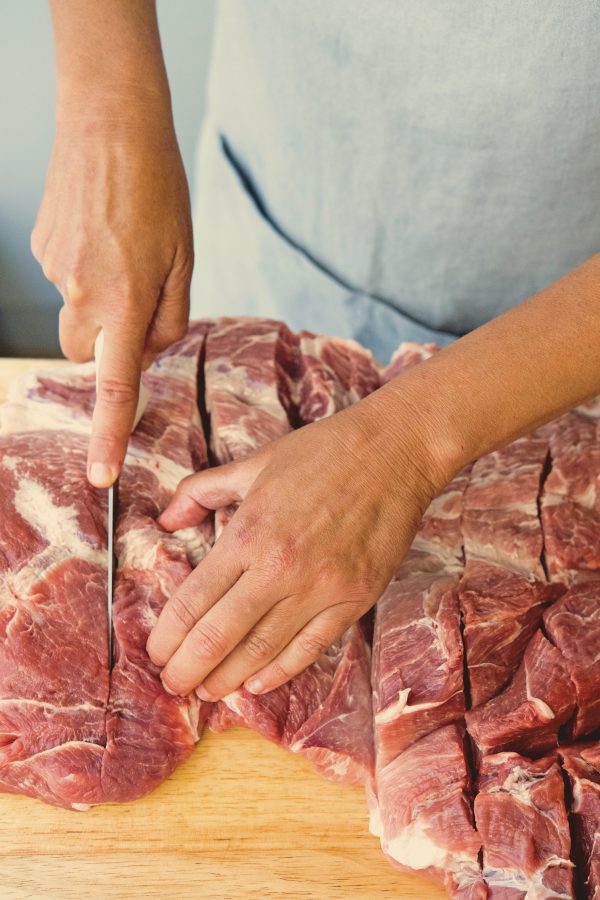
3. Using the tip of a pairing knife, make 1-inch deep incisions into the pork, spaced about 1 inch apart; do not cut all the way through the meat.
